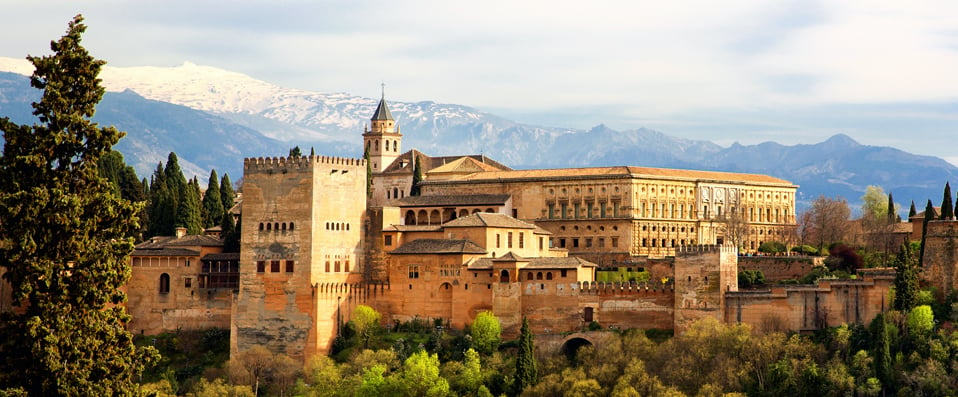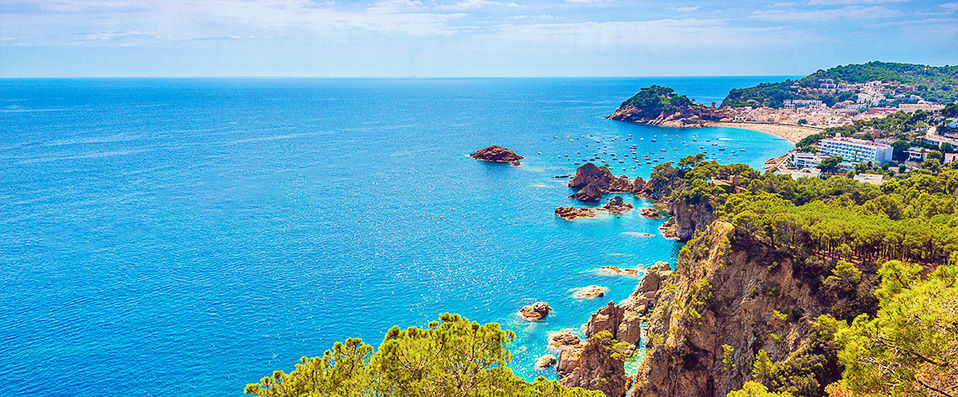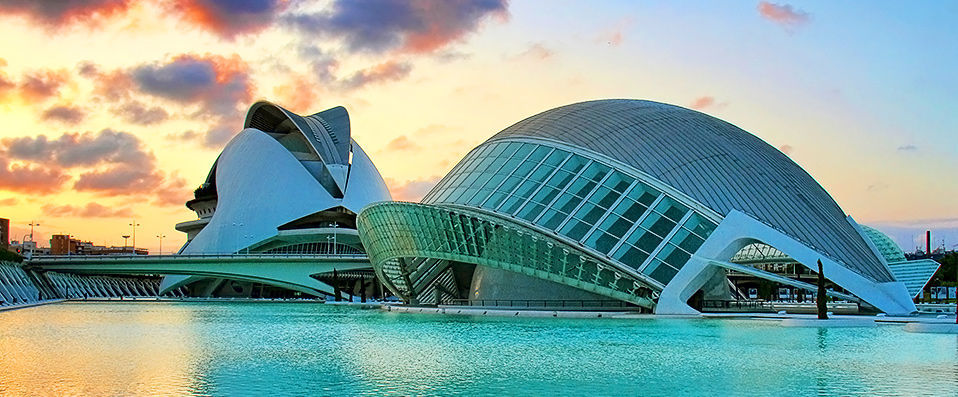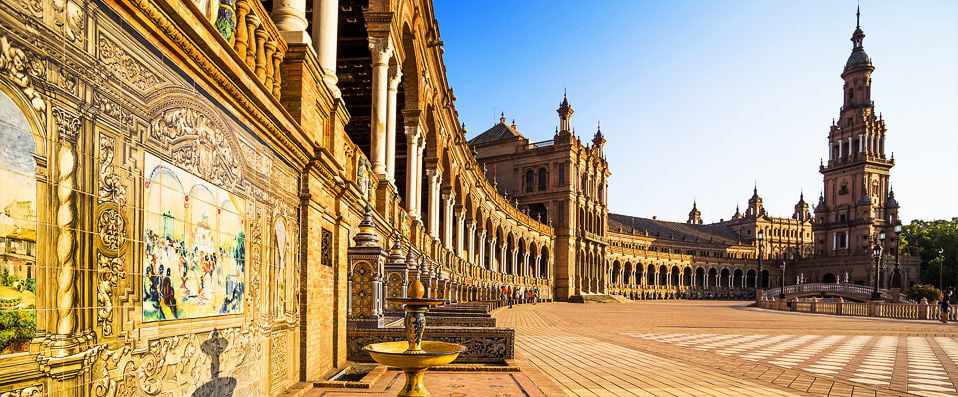Holidays in Spain: where to start?
It shouldn't take much convincing to put Spain at the top of your travel list. It is the preferred holiday destination for millions of visitors each year, and for good reason! Spain enjoys almost 3,000 hours of sunshine a year, with a delightful Mediterranean climate which allows for enjoying outdoor wining and dining, sightseeing, activities and sports, all-year-round. Combined with the stunning and diverse landscapes, from the Spanish Pyrenees to the Costa del Sol, a rich culture and history, and excellent, iconic cuisine, and all that's left is to decide where to go first!

Should I visit the Spanish capital?
Spain's capital, Madrid, is a great place to start – in particular if you are looking for a taste of Spanish culture and history. It is a lively and festive city, with something for everyone. Madrid has many wonderful activities and sights on offer, from fascinating museums, art galleries, and architecture, to excellent shopping, delicious food and drink, and exciting festivals and live music.
Surprisingly, while Madrid does receive a healthy number of holidaymakers, with so many people being drawn to the country's coastal holiday destinations, the city is refreshingly not overwhelmed by tourists. Each of the city's districts has its own personality. So the first thing we recommend to do when you visit the Spanish capital, is to stroll through the avenues and alleys, either on foot or by bicycle, soak it all in and get the layout of the land. From the famous Plaza Mayor de Madrid to the Retiro Park, the city will never cease to amaze you.
The many museums the city has to offer are a highlight and shouldn't be missed. Not sure where to start? Here's a list of recommendations:
- The Reina Sofía Museum with its collection of contemporary Spanish art.
- The Thyssen-Bornemisza Museum with its works purchased by the State and the Thyssen-Bornemisza family.
- The Cerralbo Museum nestled in a 17th-century private manor.
- The History Museum a perfect place to learn more about the rich history of both Madrid itself and of Spain.
- The National Archaeological Museum, the most important archaeological museum in Spain.
Should I visit Catalonia?
Spain's northeastern region of Catalonia, is one of it's most popular and diverse. It is known for its unique Catalan culture, the lively beach resorts of the Costa Brava and Costa Dorada, as well as the Pyrenees Mountains, rolling golf courses, and countless vineyards, the charming Medieval towns and villages, and of course it's vibrant capital city, Barcelona.
Barcelona: the beautiful Catalan capital
One of the most visited cities in Europe, let alone in Spain, Barcelona a jam-packed with things to do and see. Take a tour of Antoni Gaudi's superb masterpieces including the famous Parc Güell in the cities heights, or the Casa Batlló and La Pedrera on the prestigious Passeig de Gracia avenue, and finishing up with the iconic and gigantic, Sagrada Familia, a must-see in the city. Take a gourmet break at El Nacional or the Boqueria market, or take your pick of the traditional little tavernas. Stroll through Barcelona's Gothic Quarter, and from Christopher Columbus column along the port to Barceloneta beach and the lively Port Olympique.
In fact, its here you'll find the five-star Pullman Barcelona Skipper, an ideal city-centre seaside hotel for people looking for a luxury stay, and one of our top recommendations in the city. Whatever your interests, to ensure you have the best accommodations, VeryChic can help you find your ideal hotel in Barcelona.
The Costa Brava & The Costa Dorada

To the north of Barcelona you'll find the stunning Costa Brava, with some of the most beautiful beaches and stunning rocky coves in Spain stretching right up to the French border, plenty of typical medieval villages and towns, and breathtaking mountain landscapes. There is plenty to do and sea from discovering the local history, indulging in the locak cuisine and wines, relaxing on the beach, and enjoying countless activites and sports, both on water and on land. Lloret de Mar, Blanes, Platja d'Aro, Tossa de Mar, and Roses are just a few of the popular beach resorts on the Costa Brava, but there are also many gems further inland, such as the lovely city of Girona.
To the south of Barcelona you'll find the Costa Dorada, this strip of coastline also boasts numerous seaside resorts and quaint beaches, known for their calm, shallow waters. The history rich city of Tarragona, boasts a Roman Amphitheatre and a 12th-century cathedral, the city of Reus hosts the Gaudí Centre, with exhibits work by the famed architect’s, and then of course there's PortAventura Park, which is the biggest theme park in Spain and one of the biggest in Europe.
Should I visit Valencia?
Further down the eastern coast of Spain, you arrive at Valencia. With two thousand years of history under its belt, there is plenty to take in. The city is the capital of the Valencian region, and lies at the heart of a valley. There is a wide variety of ways to spend your day here, wether you're looking more for culture or nature, here are some of our recommendation for things to do and see.

For the culture seekers
Start with the historic centre. Here you can stroll through the stalls of the Mercado Central, one of the city's landmarks. Then head off to the Silk Lodge, commonly known as La Lonja. It is a Gothic monument from the 15th century, classified as a UNESCO World Heritage Site. Continue your visit with a stroll in the medieval quarter where you can admire some mosques dating from this period. Don't miss the City of Arts and Sciences. This futuristic complex, inaugurated in 1998, is a reflection of the city's architectural prowess. You can also visit the Valencian Institute of Modern Art, the Valencian Museum of Illustration and Modernity and the Mercantile Hall.
For the nature lovers
To start with, to enjoy a breath of fresh air without leaving the city, head to the Turia Gardens, Valencia's green lung, it boasts 100,000 square metres of the Valencia Biopark. Alternatively, just to the south of the city you'll find the beautiful Albufera Natural Park, with its stunning lake, ponds and lagoons, it is one of the most important wetlands in Spain. We also have to talk about the city's velvety, sandy beaches. The city-centre beaches with their palm-lined promenade are popular and spacious, while stretch the majority of the beaches stretch out to the south of the city, along the vast expanse of paddy fields, pine-forested dunes, and lagoon of the Albufera Natural Park. The further you go, the more wild they are, Many of the best beaches can be found here, and some have a blue flag award.
Should I visit Seville?

Traditional Seville
Let's start at the Giralda; from the top of this ancient minaret, a UNESCO World Heritage Site, you can enjoy a breathtaking view of the entire city. Continue with a visit to the impressive Alcázar de Séville; this palace with its peaceful gardens will transport you directly into the era of the Umayyad dynasty. Make sure to make time for a tour of the Museum of Fine Arts, which delights with is collection of Sevillan Baroque art. Then, for a unique tour, visit the Centro Cerámica Triana, a fascinating ceramic museum which provides insight into this important historical industry for the city.
Modern Seville
There is an incredible modern side of Seville too. Cross the Guadalquivir and discover the Triana district with its famous open market. Next, the Andalusian Centre for Contemporary Arts, is located in the monastery of the Santa María de las Cuevas Carthusian, with a exceptional collection of contemporary art. Finally, take a tour of the 20th-century buildings, starting at the Parc de María Luisa, the largest in the city, then on to the splendid Spanish and American squares, in which the buildings were designed for the Iberian-American Exposition of 1929.
Should I visit the Balearic Islands?
Whether you're searching for world-famous nightlife, historical sights, or stunning landscapes, look no further than the Balearic Islands! Just off the eastern coast of Spain, surrounded by the glistening Mediterranean Sea, the four largest and most-visited Balearic Islands are Mallorca, Menorca, Ibiza and Formentera.
- Mallorca offers an excellent balance of entertainment and nightlife, along with quaint villages, beautiful secluded nature, and stunning beaches, from its lively capital Palma de Mallorca to entertainment driven Magaluf, to the rugged coves of Cala D'Or or picturesque Fornalutx, an authentic mountain village atop the Serra de Tramuntana.
- Menorca meanwhile, is quieter still, ideal for sun-seekers looking to unwind with its many tranquil and relaxed little fishing villages and over 100 beaches with crystal-clear waters.
- Ibiza, of course, is world-renowned for its vibrant beach bars, iconic nightclubs, and non-stop festivities, particularly in San Antonio and Playa d'en Bossa. But the island does also boast a number of beautiful beaches and landscapes, along with some historical sights.
- Formentera is Ibiza's 'sister island', offering a more secluded and exclusive escape with a bohemian atmosphere. The island is covered in pine forests, and boasts stunning beaches and clear-blue waters, with some excellent snorkelling opportunities.
Should I visit the The Canary Islands?
Located off the coast of Morocco in the Atlantic Ocean to the southwest of Spain, the Canary Islands archipelago is known for its year-round warm weather, beaches and volcanic landscapes. It comprises 7 different islands with very varied scenery. While every island is worth a visit, the 4 most popular holiday destinations are:
- Tenerife is the most populous and largest island, its volcano the Teide is the highest peak in Spain. The island has many stunning beaches of all colours and popular resort areas, including Los Cristianos and Playa de las Américas.
- Gran Canaria is the second most populous city in the Canary Islands, and the island is often compared to a mini continent due to the incredible diversity of its landscapes including stunning black-lava and white-sand beaches.
- Fuerteventura is the closest island to the coast of Africa, being just 97km from Morocco. The entire island is a Unesco Biosphere Reserve. Its white-sand beaches are interspersed by cliffs and sheltered coves and it is a popular destination for for water sports, especially surfing, windsurfing and waterskiing.
- Lanzarote has the longest underwater lava tunnel in the world within its Cueva de los Verdes, and its Timanfaya National Park is a UNESCO recognised biosphere reserve. The east-coast resort of Puerto del Carmen is home to whitewashed villas, lovely beaches and dive centers.
